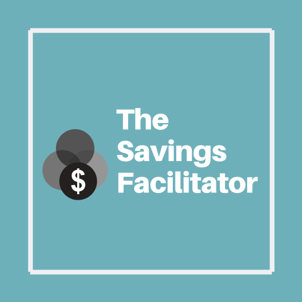We all know the importance of setting a budget, whether you’re saving for a specific goal or just want to get into a good saving pattern for your future there’s never a bad time to set a budget.
The hardest part of setting a budget is knowing what to do, how to do it and what to do once you set a budget.
In this blog post I break down Budgeting into 4 easy steps, 1. Set your Goal. 2. Gather your current data, 3. Pick your Budgeting Technique and finally 4. Track your success.
- Set your Goal
This is the obvious first step true, but rather than just taking time to write down what your goal is, take the time to consider why this is your goal. Once you have a clear picture what you want and WHY that is important to you it can be a lot easier to stay on track.

You might also like to write your why in places you can see it often (for example a post it note on your credit card) this will help to remind you of what’s important to you.
2. Gather your current data
A lot like a weight loss plan, you will need to look at what is currently happening with your finances. The easiest way I find is to go back through your bank accounts for the past 6 months to look at where your money has gone.
This will also help you to see any patterns that may be forming, perhaps you notice an old gym membership still coming out of your account or a direct debit is set up incorrectly costing you an overdrawing fee each month.

3. Pick your Budget Technique
I like to think of budgeting like weight loss (except rather than loose fat, your aim is to grow your wallet) and as everyone knows there are so many ways to lose weight and some work better for others.
For example, some people swear by a Keto diet whereas others believe the secret to their success is fasting, and the list goes on…
It’s really similar to budgeting. You may try one style of budgeting, fall in love and have all the success, or it might leave you disheartened and thinking you’ll never be any good at budgeting.
The key is, firstly, recognise there are so many different ways to budget and what suits some people may not work for you.
Some of these different techniques are;
- Budget Tracking
- Snowball method
- 2% Plan
I am currently working on an online program which will take students through the above methods including, how they work, their pros and cons and all the documents you need to help you use and test them for your budget.
If you would like to register your interest and become a product tester, please register your interest here: I would like to know more.

4. Track your Success
In the words of Peter Drucker,
‘If you Can’t measure it, you can’t improve it’
Whilst it may be tempting (especially after seeing where all your money is going in step one) to stick your head in the sand and hope for the best, you can’t.
You need to consistently track your progress so you can see if there are changes that need to be made and/or to help motivate and keep you on track.
Specifically, there are two things you may want to consider tracking.
Track the Budget technique
This is important to track because you will need to monitor how the budget is working for you. The budget may not be in depth enough, or it may be too in depth and taking up too much of your time.
Particularly in the beginning, take some time to consider is the budgeting technique you’re using helping to motivate you, is it keeping you on track and ultimately, is it working.
If you have any doubts, you may like to try another Budgeting Technique and see how that suits you.
Track the Goal
This is the equivalent of stepping on the scales. There’s no point setting up a budget, investing your time and efforts into a budget only to find the budget you have will not help you achieve your goal. Perhaps you need to reconsider your goal, did you set it optimistically and you’re perhaps setting yourself up for the impossible.
Alternatively you could have set your goal too low and now you’re on track to smash it, you can increase your goal.
Don’t forget
It’s really important to remember, when tracking your progress against your goal, never beat yourself up about where you are. Unconsciously, you will begin to hate tracking your goal, and this will be the first step to giving up on your Budget and your end goal.
Instead, if you are not where you want to be, take some time to consider why. What changes could you make (no matter how small) to help you get a little bit further next week.
On the flip side, if you are on track, or doing really well don’t forget to reward yourself. Congratulate yourself, maybe share the good news with a friend or family member.
Take the time to enjoy the feeling of pride and accomplishment, it’s these moments that will help you through the tough times.

In Summary;
Don’t be concerned about the various Budgeting Techniques, the most important thing you can do is to start. Start today and start at Step 1. Setting your goal. The sooner you start, the closer you will be to reaching your goal.
If you would like to know more about Budgeting Techniques, including different spreadsheets to help you Track your budget and your goal then make sure you register your interest for The Savings Facilitator set to launch later this year.
You will get access before the official launch, your access will be free of charge and you will also get an opportunity to share feedback.
To register your interest click here.

